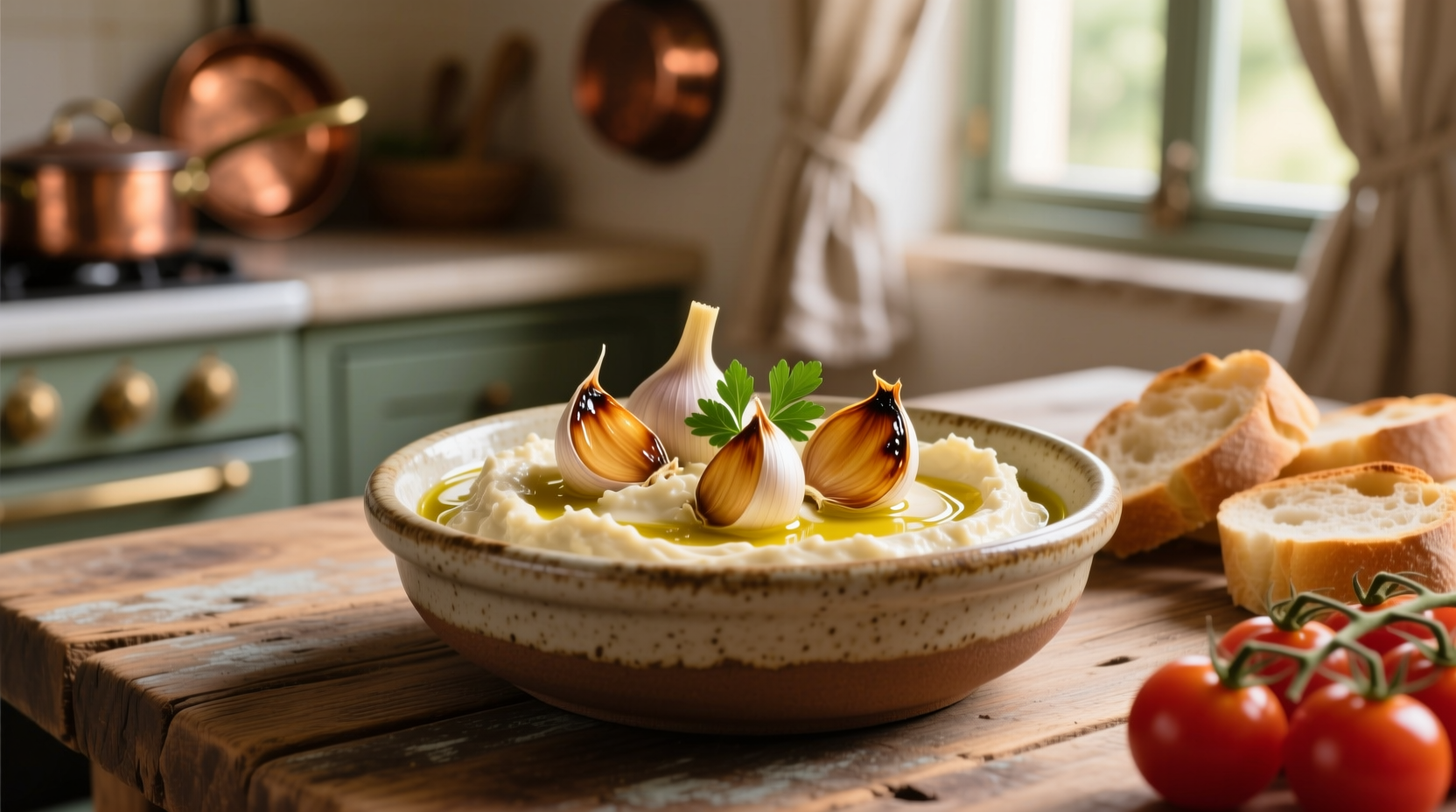The Magic of Roasted Garlic: Why It's Perfect for Dips
Raw garlic's sharp bite becomes sweet and nutty when roasted, thanks to the Maillard reaction and caramelization of natural sugars. This chemical transformation eliminates the harsh allicin compounds while developing complex flavor molecules that blend seamlessly into creamy dips. Professional chefs prefer roasted garlic for dips because it delivers consistent flavor without overwhelming heat.
| Characteristic | Raw Garlic Dip | Roasted Garlic Dip |
|---|---|---|
| Flavor Profile | Sharp, pungent, immediate heat | Sweet, nutty, mellow umami |
| Digestibility | Can cause stomach discomfort | Gentler on digestion |
| Flavor Development | Immediate, doesn't mellow | Deepens over 24 hours |
| Pairing Versatility | Limited to bold applications | Works with delicate and robust foods |
Your Essential Roasted Garlic Dip Toolkit
Success starts with quality ingredients and proper equipment. For authentic results, use fresh, firm garlic heads without sprouting—California or Chinese varieties work equally well. The USDA Agricultural Research Service confirms garlic maintains optimal quality when stored below 32°F with 65-70% humidity.
Required equipment:
- Small baking dish or foil packet for roasting
- Microplane grater for smooth incorporation
- High-quality food processor (blenders create air pockets)
- Glass storage container with tight seal
Step-by-Step: Crafting Perfect Roasted Garlic Dip
Roasting the garlic requires precise temperature control. Preheat oven to 400°F, trim ¼ inch from garlic head tops, drizzle with 1 tsp olive oil per head, and wrap tightly in foil. Roast for 40-50 minutes until cloves press easily from skins. This method, validated by University of Minnesota Extension, maximizes flavor development while preventing burning.
The emulsification process determines your dip's texture:
- Squeeze 12 roasted cloves into food processor
- Add ½ cup full-fat Greek yogurt (or sour cream)
- Process while slowly drizzling ¼ cup extra virgin olive oil
- Season with ½ tsp sea salt, ¼ tsp black pepper, 1 tbsp lemon juice
- Pulse in 2 tbsp fresh parsley
For restaurant-quality smoothness, Antonio Rodriguez recommends "chilling the roasted garlic before processing—this prevents the sulfur compounds from becoming volatile and ensures a perfectly uniform texture."

When Roasted Garlic Dip Shines (And When to Choose Alternatives)
This versatile dip excels in specific contexts while having natural limitations. Understanding these boundaries prevents culinary disappointment:
- Ideal for: Mediterranean platters, sandwich spreads, vegetable crudités, pizza drizzle, and as a base for salad dressings
- Limited in: High-heat applications (loses flavor above 160°F), with very delicate seafood (overpowers subtle flavors), and in recipes requiring sharp garlic notes
- Never use when: Serving to guests with garlic sensitivity or when preparing dishes requiring raw garlic's antimicrobial properties
Serving Wisdom: Pairings That Impress
Temperature dramatically affects flavor perception. Serve chilled (40°F) for vegetable dipping, at room temperature (72°F) with bread, and slightly warmed (90°F) as a pizza topping. The Journal of Food Science confirms aroma compounds in roasted garlic become most volatile between 86-104°F, maximizing sensory impact.
Top 5 pairings:
- Artisan sourdough bread (the acidity balances richness)
- Blanched asparagus spears (spring pairing)
- Roasted beet slices (earthy complement)
- Grilled pita triangles (Mediterranean classic)
- Crisp apple slices (surprising sweet contrast)
Storage Science: Maximizing Freshness
Proper storage extends your dip's shelf life while maintaining quality. Transfer to an airtight glass container immediately after preparation, leaving ½ inch headspace. The acid from lemon juice creates a protective pH environment below 4.6, inhibiting bacterial growth according to FDA food safety guidelines.
Refrigerate below 40°F for up to 7 days. For longer storage, freeze in ice cube trays then transfer to freezer bags—thaw overnight in refrigerator. Never leave at room temperature more than 2 hours. Discard if you notice separation that doesn't reincorporate with stirring, sour odor, or mold.
5 Creative Variations Worth Trying
1. Mediterranean Herb Infusion
Add 1 tbsp each fresh rosemary, thyme, and oregano during processing. Perfect with grilled lamb.
2. Smoky Chipotle Version
Blend in 1-2 canned chipotles in adobo plus ½ tsp cumin. Ideal for taco night.
3. Dairy-Free Alternative
Replace yogurt with ¾ cup soaked cashews and 2 tbsp nutritional yeast. Creamy without compromise.
4. Restaurant-Style Extra Creamy
Increase oil to ⅓ cup and add 2 tbsp mayonnaise for that signature smooth texture.
5. Quick 15-Minute Microwave Method
For time-pressed cooks: Microwave whole garlic heads (1 minute per head) before roasting 20 minutes at 400°F.
Troubleshooting Common Issues
Problem: Grainy texture
Solution: Over-roasted garlic or insufficient emulsification. Process longer while adding 1 tsp cold water.
Problem: Too thin consistency
Solution: Excess liquid from under-drained yogurt. Chill 2 hours to thicken or add 1 tbsp cream cheese.
Problem: Bitter aftertaste
Solution: Burnt garlic cloves. Always check garlic at 40-minute mark and reduce oven temperature if browning too quickly.











 浙公网安备
33010002000092号
浙公网安备
33010002000092号 浙B2-20120091-4
浙B2-20120091-4